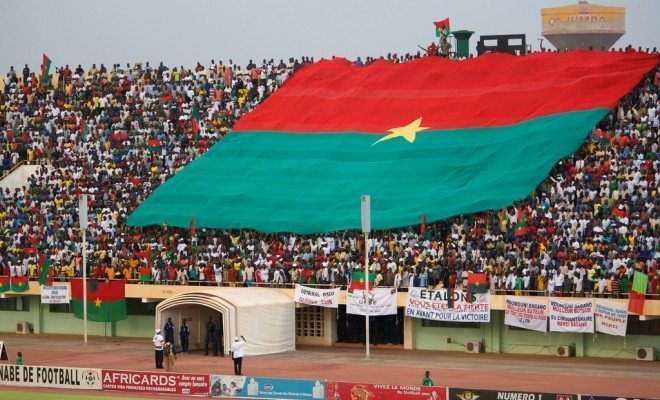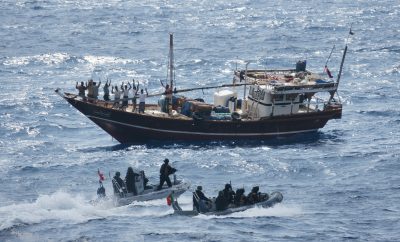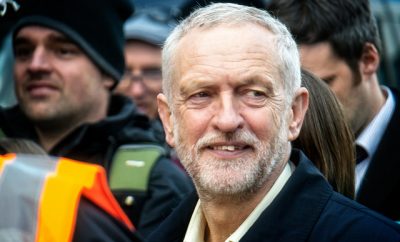 Image courtesy of [Dormiveglia via Flickr]
Image courtesy of [Dormiveglia via Flickr]
World
Burkina Faso: A Troubled History and Looming Elections
Burkina Faso, a small, land-locked country in Western Africa, is currently in the midst of a political transition that could be monumental for the region. Much like the North African nations that underwent political change during the Arab Spring, Burkina Faso is currently in the throes of political turmoil. In a country with a long history of military coups, mass protests recently forced Burkina Faso’s president to resign after holding power for 27 years.
While an interim government plans to hold elections at the end of the month, recent challenges have made the country’s transition extremely difficult. From a brief counter-coup to the relatively strong influence of the military, the country has a long way to go before its government is stable again. Read on to see exactly what is going on in Burkina Faso, how it all started, and where the conflict is likely to go next.
History of Burkina Faso
Burkina Faso, at the time called Upper Volta, achieved full independence from France in 1960 after a long period of colonial rule. Between its independence in 1960 and 1987, the country went through five separate military coups. The first coup occurred just six years after it gained its independence when the democratically elected Maurice Yaméogo was ousted by military leader Sangoulé Lamizana.
Upper Volta adopted a new constitution in 1970 giving Lamizana power until another coup, led by Saye Zerbo, removed him in 1980. Zerbo was quickly replaced by Major Jean-Baptiste Ouédraogo in 1982. Ouédraogo’s forces quickly splintered into two groups: conservative and radical. Thomas Sankara assumed control of the radical faction and usurped Ouédraogo to become the country’s leader. After coming to power in 1983, Sankara implemented a series of left-wing policies. Upper Volta was renamed Burkina Faso in 1984.
Like his predecessors, Sankara’s rule was short-lived, as he was overthrown and killed in 1987. Blaise Compaoré, an aide to Sankara, led the 1987 military coup. Deviating from the previous instability, Compaoré managed to hold power in Burkina Faso for 27 years. A new constitution was put in place in 1991 and Compaoré won in a widely criticized election. He would go on to win three more elections, in 1998, 2005, and 2010.
The video below gives a brief history of Burkina Faso starting with Compaore’s coup in 1987:
Recent Developments
Compaoré Steps Down
Given Burkina Faso’s history of coups and Compaoré’s near overthrow in 2011, it appeared likely he would step down at the end of his term in 2015. However, like many of the rulers before him, Compaoré sought to maintain his power. In October 2014, Burkina Faso’s National Assembly considered a bill to remove the term limit on the presidency, meaning that he could run for reelection the next year. This immediately led to protests, the burning of parliament, and clashes between protestors and the military, much like what happened in 2011.
Authorities eventually imposed martial law due to the violence, which included protestors taking over state-controlled media outlets and looting the president’s home. In addition to martial law, the vote to extend the term limit was dropped, yet the protests continued. In a final effort to ease tension, Compaoré dissolved his hand-picked government and promised more dialogue with the protestors. Finally, after all the other measures failed, Compaoré resigned from the presidency after 27 years in office. After Compaoré’s resignation, the military briefly took control before a panel appointed Michael Kafando the interim president; Kafando was formerly a foreign minister and Burkina Faso’s ambassador to the United Nations.
Leading up to the events that caused Blaise Compaoré to resign, Burkina Faso was in many ways primed for change. Despite recent economic progress and a large gold reserve, Burkina Faso was one of the poorest countries in the world. In fact, the situation became so dire in 2011 that it appeared a coup was imminent, as soldiers protested unpaid housing and food allowances. That conflict was likely only avoided because of a series of concessions offered by Compaoré. When the question of extending his term limit came up last year, Compaoré quickly ran out of options to appease protestors.
The video below details the fall of president Compaoré:
Recent Developments
The coup, or forced resignation, of October 2014 fits into Burkina Faso’s long history of power struggles, but this time the driving force seemed to be dissatisfaction among the public and not exclusively through military intervention. However, in a unique twist, the interim government under president Michel Kafando was briefly overthrown in a counter-coup in September.
The brief coup was led by the Presidential Security Regiment, which remained loyal to Blaise Compaoré after his rule ended. Members of the regiment orchestrated a coup due to their of support for the previous ruler and the fear that they would not be allowed to participate in the country’s upcoming elections. The coup lasted for about a week before its leaders were taken into custody. They now face trial for trying to “stop the process to democracy and liberty for the people of Burkina Faso.” Pressure from country’s military, the West African Bloc, and once again, the citizens of Burkina Faso themselves ensured that the takeover was only temporary. Elections remain scheduled for the end of November.
The accompanying video below details the end of the attempted coup:
Impact Abroad
While a controversial figure, Blaise Compaoré was also an invaluable mediator and his absence from the country may have important consequences for the region. Compaoré played a vital role in negotiations aimed at ending the violence in nearby Cote D’Ivoire and Mali. In 2013, the International Crisis Group implied that if he left power in 2015 it would be a significant loss for a strategically important point in West Africa.
Compaoré was also an important ally in the west’s fight against extremism in West Africa. Both the United States and France, Burkina Faso’s former colonial ruler, have troops stationed there. Following the protests, there were no immediate signs these troops would be removed or forced to leave. At the time of Compaoré’s resignation, it was also feared that his ouster could be a sign of things to come, a movement dubbed the “African Spring.” However, this concern never became a major issue.
Moving Forward
So what’s next for Burkina Faso? Some view the recent changes in Burkina Faso as part of a larger movement, akin to the Arab Spring in North Africa, but possibly even larger. Zachariah Mampilly, an associate professor of Africana Studies at Vassar College, argues that the developments in Burkina Faso reflect a major trend in Africa. To Mampilly, the protests in North Africa and in places like Burkina Faso are not separate but intertwined over issues of inequality and perpetual poverty. In other words, the Arab Spring and the African Spring were not different movements, rather one larger movement across Africa. While relatively little progress has been made, the emerging trend in protests across the continent may be related.
On the other hand, some see the transition as far less altruistic. Immediately after Compaoré resigned, yet another, Lieutenant Colonel Zida, was elected to be Prime Minister of the interim government. The fact that a military man was once again involved raised questions over whether this was a change sparked by people or just another coup. While many remain skeptical, others are hopeful as the country continues to prepare for elections at the end of the month.
Conclusion
After 27 years under the rule of Blaise Compaoré, Burkina Faso is undergoing a period of rapid political change. After Compaoré’s forced resignation, an interim government was appointed only to be briefly overtaken by yet another coup. While the interim government has regained its control, the country has a long way to go before stability can return. Although elections are scheduled for the end of the month, the military’s involvement in the interim government has led many to question whether it will continue to consolidate its power in the vacuum left by Compaoré.
If Burkina Faso can stem off future coups and actually hold elections, it will go a long way to proving that it has made strides. If and when that happens, the country must then find a way to cultivate its natural wealth, while avoiding past pitfalls. If not, Burkina Faso could easily fall back into the cycle of coups that has plagued its history. If that turns out to be the case, the comparisons between what happened in Burkina Faso and the Arab Spring may, unfortunately, be quite fitting.
Resources
Encyclopedia Britannica: Burkina Faso
History World: History of Burkina Faso
Time: What You Need to Know About the Unrest in Burkina Faso
New York Times: Burkina Faso Charges General Who Led Failed Coup
Washington Post: Burkina Faso’s Uprising Part of an Ongoing Wave of African Protests
Al-Jazeera: Burkina Faso: Uprising or military coup?
New York Times: Violent Protests Topple Government in Burkina Faso
The Guardian: Burkina Faso Coup Leader in Custody








Comments